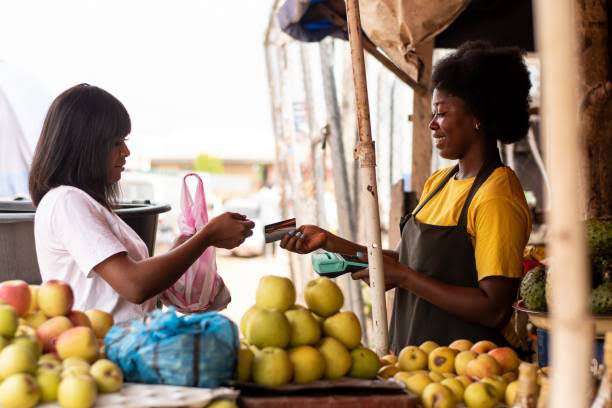The role of stablecoins in bridging the wealth gap in developing nations is emerging as a groundbreaking solution to financial inequality, where the gap isn’t just wide—it’s a chasm
Stablecoins are digital currencies pegged to stable assets like fiat currencies or commodities, designed to minimize price volatility. These innovative tools are proving to be powerful assets in addressing the financial struggles faced by millions in regions with limited access to traditional banking systems.
This article explores the role of stablecoins in bridging the wealth gap in developing nations, emphasizing their potential to foster financial inclusion, lower transaction costs, and unlock opportunities for underserved communities.
Understanding the Wealth Gap in Developing Nations
Defining the Wealth Gap
The role of stablecoins in bridging the wealth gap in developing nations cannot be fully appreciated without first understanding the wealth gap itself. In simple terms, the wealth gap refers to the stark disparity in income and assets between the rich and the poor.
This inequality is particularly pronounced in developing economies, where systemic barriers prevent large portions of the population from achieving financial stability.
Key Contributing Factors
- Limited Access to Financial Services: Millions in developing nations are unbanked or underbanked, cutting them off from opportunities like savings accounts, credit, and investments.
- Inflation and Currency Volatility: Many developing countries experience rapid inflation and fluctuating currency values, eroding the purchasing power of their citizens.
- High Remittance Fees: For families reliant on money sent from abroad, cross-border transaction costs can consume a significant portion of their income.
Transition to Stablecoins
These challenges underline why the role of stablecoins in bridging the wealth gap in developing nations is so critical.
Stablecoins provide an innovative solution by offering a stable store of value, low-cost transactions, and accessible financial tools that bypass traditional banking systems.
By addressing these barriers, stablecoins hold immense promise for reducing inequality and fostering economic inclusion.
What Are Stablecoins and How Do They Work?
The role of stablecoins in bridging the wealth gap in developing nations is rooted in their ability to offer financial stability and accessibility. Stablecoins are a type of digital currency designed to maintain a consistent value by being pegged to stable assets such as fiat currencies (like the US Dollar), commodities (like gold), or even algorithms that regulate supply.
Unlike cryptocurrencies like Bitcoin, which are known for extreme price volatility, stablecoins provide a more reliable medium of exchange and store of value. This stability makes them ideal for addressing financial challenges in developing economies, where inflation and currency devaluation are common obstacles.
Popular examples of stablecoins include USDT (Tether), USDC (USD Coin), and DAI, each of which is widely used for transactions, remittances, and savings. These features demonstrate how the role of stablecoins in bridging the wealth gap in developing nations can create new opportunities for economic empowerment.
By enabling secure, low-cost transactions and protecting against currency fluctuations, stablecoins are emerging as a critical tool. Their ability to foster financial inclusion illustrates why the role of stablecoins in bridging the wealth gap in developing nations is increasingly significant.
The Role of Stablecoins in Bridging the Wealth Gap
The role of stablecoins in bridging the wealth gap in developing nations lies in their ability to overcome systemic barriers that perpetuate inequality.
By offering financial accessibility, combating inflation, reducing remittance costs, and enabling cross-border trade, stablecoins have the potential to transform economies and improve lives. Let’s explore these roles in detail:
Financial Inclusion
Stablecoins empower unbanked populations by providing access to financial services through mobile wallets and blockchain technology.
Unlike traditional banking systems, which often require extensive documentation and minimum balances, stablecoins make it possible for anyone with a smartphone to participate in the financial ecosystem.
Platforms like Celo and Stellar are at the forefront of this revolution, enabling peer-to-peer transactions and savings without intermediaries.

These innovations illustrate how the role of stablecoins in bridging the wealth gap in developing nations fosters financial inclusion, particularly in regions where banking infrastructure is limited.
Combating Inflation and Currency Volatility
In countries like Venezuela and Zimbabwe, hyperinflation and currency devaluation have eroded the value of savings and incomes. Stablecoins offer a lifeline by providing a stable store of value pegged to more reliable assets, such as the US Dollar.
For instance, residents in Venezuela have increasingly turned to stablecoins like USDT to protect their purchasing power.
This demonstrates how the role of stablecoins in bridging the wealth gap in developing nations can counteract the devastating effects of inflation and ensure financial stability.
Reducing Remittance Costs
Traditional remittance methods, such as Western Union, often charge high fees and take several days to process transactions. In contrast, stablecoin transactions are faster and significantly cheaper.
A case study from the Philippines highlights the benefits: overseas workers using stablecoins like USDC were able to send money home instantly at a fraction of the cost.
This showcases how the role of stablecoins in bridging the wealth gap in developing nations extends to reducing the financial burden on families reliant on remittances.
Enabling Cross-Border Trade
Stablecoins facilitate cross-border trade by eliminating the need for costly currency conversions and reducing the risk of currency fluctuations.
This is especially crucial for small businesses in developing nations, which often struggle to compete internationally due to high fees and unpredictable exchange rates.
For example, a small business in Kenya using Stellar-based stablecoins can trade with partners in Europe or Asia seamlessly, bypassing traditional banking channels.
This underscores how the role of stablecoins in bridging the wealth gap in developing nations drives economic growth by enabling global trade opportunities.
Challenges and Barriers to the Adoption of Stablecoins in Developing Nations
While stablecoins have immense potential to bridge the wealth gap, their adoption in developing nations faces significant challenges. Below are 10 key barriers and suggested solutions to address them:
Limited Internet and Smartphone Penetration
Challenge: Many developing nations lack the infrastructure to support widespread use of digital tools. In rural areas, internet access and smartphone ownership remain low.
Solution:
- Public-Private Partnerships: Collaborate with governments and telecom companies to provide affordable internet and smartphones.
- Offline Solutions: Develop blockchain platforms that allow transactions through SMS (e.g., Kotani Pay in Africa).

Regulatory Hurdles and Lack of Government Support
Challenge: Governments in many developing countries are skeptical about cryptocurrencies and stablecoins, fearing loss of monetary control or financial instability.
Solution:
- Regulatory Sandboxes: Encourage governments to create controlled environments for testing stablecoin applications.
- Collaboration: Partner with central banks to develop central bank digital currencies (CBDCs) or stablecoin-backed initiatives.
Lack of Public Awareness About Blockchain and Stablecoins
Challenge: Many individuals in developing nations are unfamiliar with blockchain technology and stablecoins, leading to distrust and hesitation.
Solution:
- Digital Literacy Programs: Work with NGOs to educate communities about the benefits and uses of stablecoins.
- Localized Campaigns: Use relatable analogies and real-world examples to demystify stablecoins.
Volatility in the Crypto Ecosystem
Challenge: Public perception often lumps stablecoins with volatile cryptocurrencies like Bitcoin, creating skepticism.
Solution:
- Clear Communication: Highlight the stability and fiat backing of stablecoins through campaigns.
- Case Studies: Share success stories to build trust and differentiate stablecoins from volatile crypto assets.
Cybersecurity Risks and Fraud
Challenge: Concerns over hacks, scams, and phishing attacks deter potential users.
Solution:
- Secure Platforms: Promote platforms with strong security measures and transparent operations.
- Awareness Campaigns: Educate users on identifying and avoiding scams.
High Initial Setup Costs for Small Businesses
Challenge: Small businesses may find integrating stablecoin payments expensive due to setup costs or unfamiliarity.
Solution:
- Subsidized Integration: Provide grants or incentives to businesses adopting stablecoin solutions.
- User-Friendly Platforms: Simplify onboarding processes with intuitive interfaces and low fees.
Infrastructure Challenges in Rural Areas
Challenge: Power outages, poor connectivity, and lack of financial institutions hinder adoption in remote regions.
Solution:
- Solar-Powered Systems: Implement energy-efficient solutions like solar-powered ATMs for stablecoin transactions.
- Community Hubs: Establish blockchain-enabled financial hubs in underserved areas.
Cultural Resistance and Trust Issues
Challenge: Many people trust traditional cash systems over new digital solutions due to cultural preferences or mistrust of technology.
Solution:
- Local Partnerships: Partner with trusted local organizations to build credibility.
- Incentives for Adoption: Provide discounts or rewards for first-time users of stablecoins.
Liquidity and Onboarding Issues
Challenge: Converting stablecoins to local currencies and vice versa remains difficult in regions with limited crypto exchanges.
Solution:
- Local Agents: Develop agent networks to facilitate conversions in areas with limited exchange access.
- Cross-Border Payment Gateways: Expand partnerships with existing remittance providers to support stablecoin liquidity.
Uncertain Economic Impact
Challenge: Critics argue that widespread use of stablecoins could undermine local currencies and disrupt existing financial systems.
Solution:
- Gradual Implementation: Focus on use cases like remittances and microfinance before scaling to wider applications.
- Government Collaboration: Work with central banks to ensure stablecoin adoption complements local economic policies.
Case Studies: Stablecoins in Action
Remittances in Kenya

Kenya is a global leader in mobile money adoption, with platforms like M-Pesa revolutionizing financial inclusion. Stablecoins have further enhanced this ecosystem by reducing remittance costs and improving speed.
Stablecoin providers such as Celo integrate with mobile wallets, enabling users to send and receive cross-border payments at a fraction of the cost.
Impact:
- Traditional remittance platforms like Western Union charge fees as high as 10%, whereas stablecoins reduce these costs to less than 1%.
- Faster transaction times—transfers that previously took days now take minutes.
Real-World Results: A study by Emergent Payments found that families receiving remittances via stablecoins in Kenya saved up to 25% more money annually compared to traditional methods.
By reducing remittance fees and making funds accessible instantly, stablecoins play a pivotal role in bridging the wealth gap in developing nations like Kenya.
Empowering Small Businesses in Nigeria

Nigeria, Africa’s largest economy, faces challenges like currency devaluation and limited access to traditional banking services.
Stablecoins have emerged as a solution for small businesses looking to trade internationally without the burden of exorbitant fees.
Platforms like Binance Pay and Stellar enable small businesses to accept stablecoins like USDT and USDC for goods and services.
Impact:
- Reduced reliance on volatile local currencies, providing businesses with financial stability.
- Access to global markets—businesses can transact seamlessly with international buyers.
Case Study: A Lagos-based e-commerce seller shifted to accepting USDT for payments. Over six months, the seller reported:
- A 40% reduction in transaction fees.
- A 25% increase in sales due to smoother cross-border trade.
These results demonstrate how stablecoins are creating opportunities for economic growth and bridging the wealth gap in developing nations like Nigeria.
Conclusion
The potential of stablecoins to create a more equitable and inclusive financial ecosystem in developing nations is immense.
As highlighted throughout this article, stablecoins offer solutions to some of the most pressing challenges facing underserved populations—such as financial inclusion, inflation control, and high remittance fees.
The use of stablecoins as an alternative to unstable national currencies provides an opportunity for individuals and businesses to thrive in a globalized economy.
As this article demonstrates, the role of stablecoins in bridging the wealth gap in developing nations is transformative and essential for a more inclusive future.
By reducing barriers to financial access, enabling cross-border trade, and providing stability in volatile markets, stablecoins can help unlock economic opportunities for millions.
To fully realize the benefits of stablecoins, partnerships, education, and innovation will be crucial. As these technologies continue to evolve, they could play a central role in fostering financial empowerment in the Global South.
We encourage you to explore the possibilities of stablecoins further and share your thoughts on how they could help reduce inequality.
The role of stablecoins in bridging the wealth gap in developing nations offers a pathway to a brighter, more equitable future.
